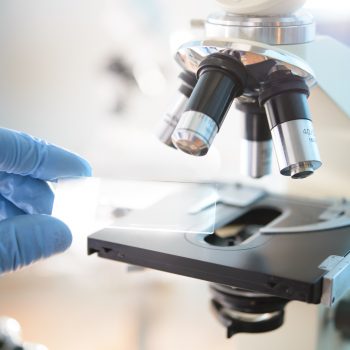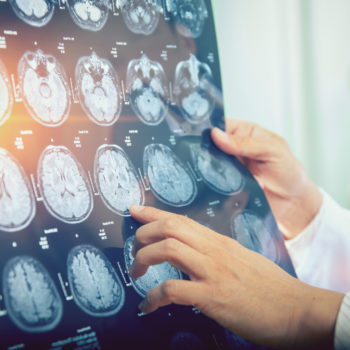Meningiomas, gliomas, neurinomas, cavernous angiomas. All tumors and masses that develop in highly delicate brain areas, where the surgeon has to operate in areas rich in vessels, nerves and brain tissue that may be damaged. An innovative new surgical technique is exploring the way to remove localized basicranium tumors, allowing you to get to the area of surgery without going through the healthy brain tissue. We talked about it with Prof. Federico Pessina, Head of the Surgery Section of Basicranio in Humanitas and lecturer at Humanitas University.
Symptoms and types of brain tumors
Brain tumors are of different types and have different symptoms.
Menginomas develop from the meninges, tissues that surround the outside of the brain. In most cases they are accidentally diagnosed because they are small and asymptomatic. For the rest, the symptomatology consists of epileptic seizures and, less often, if large, focal neurological deficits or behavioral and cognitive changes.
Originated from glial cells, which have functions of support and nutrition of neurons, gliomas can be low-grade malignant and generally manifest in young adults (18-50 years) with epileptic seizures, but also asymptomatic, or high-grade malignancy, which occur in adults or elderly people, both with epileptic seizures and neurological (motor difficulties, coordination) or cognitive (memory difficulties, concentration) deficits.
Neurinomas are benign neoplasms of the nerve sheaths, more often located at the base of the skull. The most common neoplasms affect the auditory nerve and manifest themselves in tinnitus, hearing loss and dizziness. Finally, cavernous angiomas are venous malformations, often of an occasional nature, related to epileptic or haemorrhagic symptoms; they can often undergo small asymptomatic bleeding that can only be detected by magnetic resonance imaging.
The new anterior petrosectomy technique according to Kawase
“It can be difficult to access safely to tumors located in deep regions at the level of the middle and posterior basicranium – says Dr. Federico Pessina, neurosurgeon at Humanitas and professor at Humanitas University -. In this region the pathologies that can be found are basically meningiomas, gliomas, trigeminal neurinomas and angiomas found in the brainstem. To reach this region, the neurosurgeons, following the path of the otorhinolaryngologists and their experience in surgery of the petrosa rock, began to work on the deep regions of the temporal bone, developing the technique of anterior petrosectomy according to Kawase.
The goal was to get to the mass to be removed trying to avoid delicate areas of the brain: “Starting from the temporal bone you can have access to deep regions in relative safety, without manipulation of healthy brain tissue, cranial nerves and vessels, as happens with a traditional approach, arriving directly on the mass to be removed,” explains Dr. Pessina. “With anterior petrosectomy we work in a less noble tissue, also rich in important anatomical structures but with relatively fixed reference points on their position, which can be identified, exposed and preserved. Passing through the bone, we get to directly open the hard mother that covers the brain just above the tumor, without having healthy brain tissue interposed between the surgeon’s scalpel and the lesion to be removed. This technique, initially used only for meningiomas and neurinomas, has thus also been applied to glial tumours and cavernous angiomas located in the deep region of the brain stem. This is a very complex approach, which requires a deep knowledge of the anatomical base of the skull and a confidence from a technical point of view in access: you meet important structures of facial motility, hearing and vascular, not to be damaged, but that can be well identified and preserved so that the softness, ie the possible side effects of the intervention, is much lower than the classic approach.










